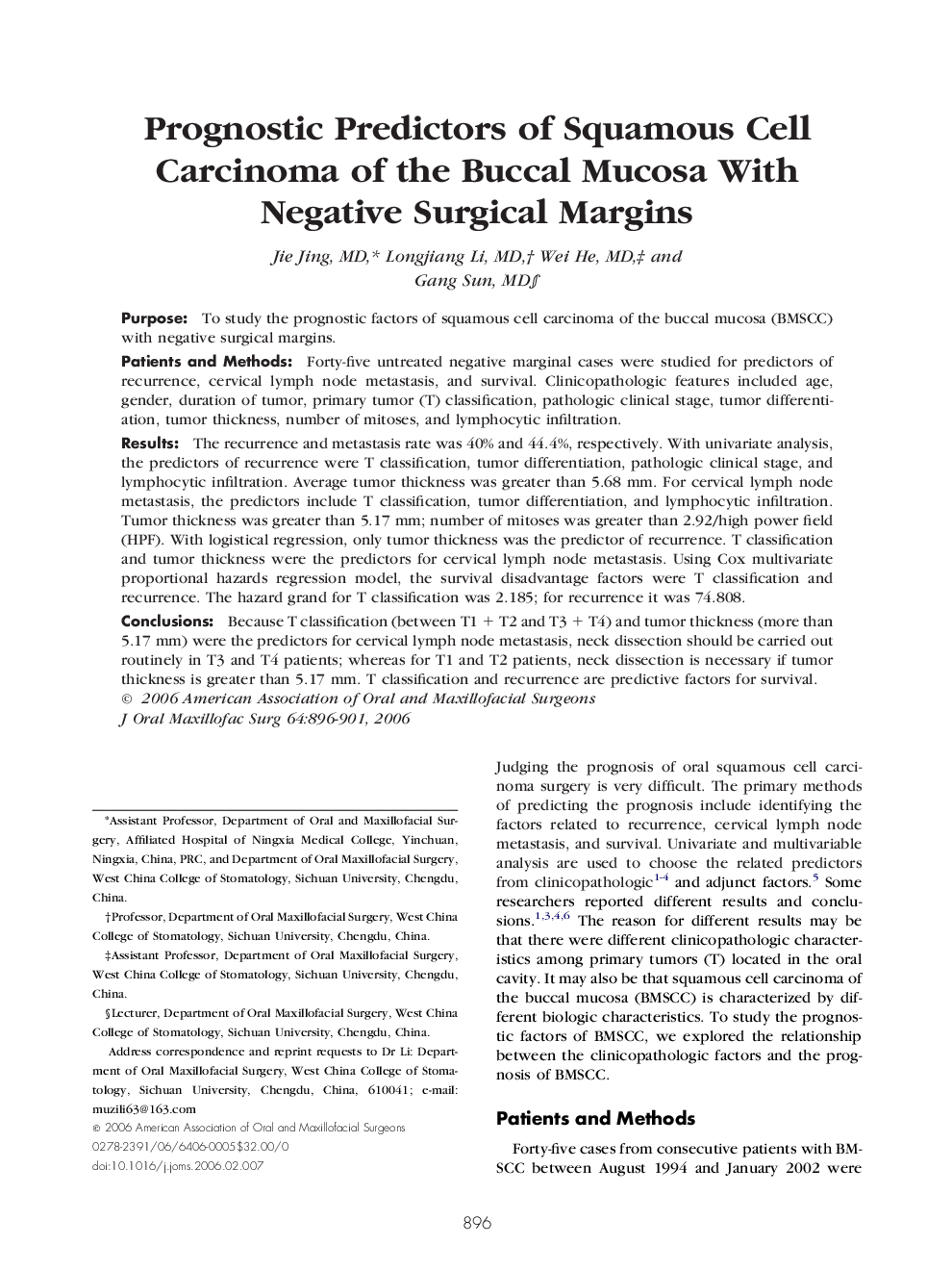| Article ID | Journal | Published Year | Pages | File Type |
|---|---|---|---|---|
| 3155677 | Journal of Oral and Maxillofacial Surgery | 2006 | 6 Pages |
PurposeTo study the prognostic factors of squamous cell carcinoma of the buccal mucosa (BMSCC) with negative surgical margins.Patients and MethodsForty-five untreated negative marginal cases were studied for predictors of recurrence, cervical lymph node metastasis, and survival. Clinicopathologic features included age, gender, duration of tumor, primary tumor (T) classification, pathologic clinical stage, tumor differentiation, tumor thickness, number of mitoses, and lymphocytic infiltration.ResultsThe recurrence and metastasis rate was 40% and 44.4%, respectively. With univariate analysis, the predictors of recurrence were T classification, tumor differentiation, pathologic clinical stage, and lymphocytic infiltration. Average tumor thickness was greater than 5.68 mm. For cervical lymph node metastasis, the predictors include T classification, tumor differentiation, and lymphocytic infiltration. Tumor thickness was greater than 5.17 mm; number of mitoses was greater than 2.92/high power field (HPF). With logistical regression, only tumor thickness was the predictor of recurrence. T classification and tumor thickness were the predictors for cervical lymph node metastasis. Using Cox multivariate proportional hazards regression model, the survival disadvantage factors were T classification and recurrence. The hazard grand for T classification was 2.185; for recurrence it was 74.808.ConclusionsBecause T classification (between T1 + T2 and T3 + T4) and tumor thickness (more than 5.17 mm) were the predictors for cervical lymph node metastasis, neck dissection should be carried out routinely in T3 and T4 patients; whereas for T1 and T2 patients, neck dissection is necessary if tumor thickness is greater than 5.17 mm. T classification and recurrence are predictive factors for survival.
